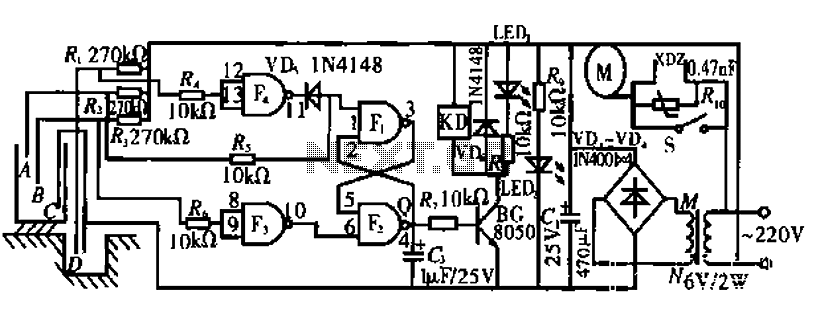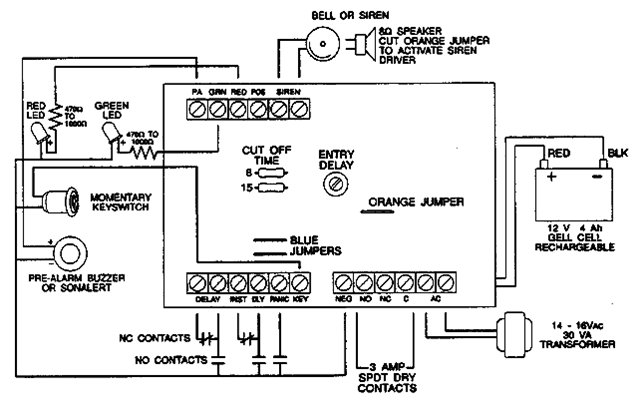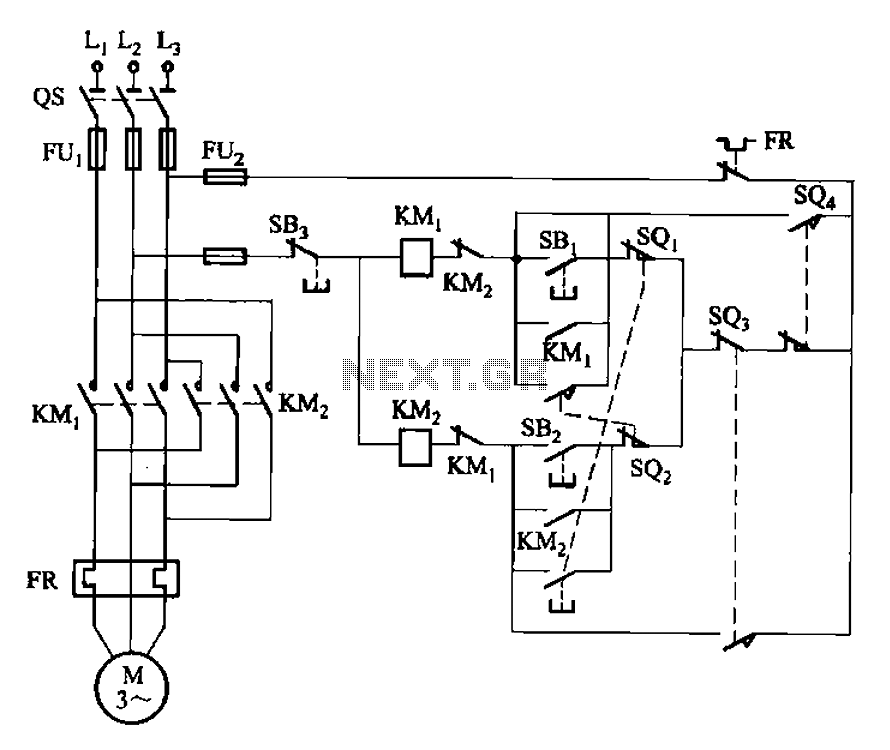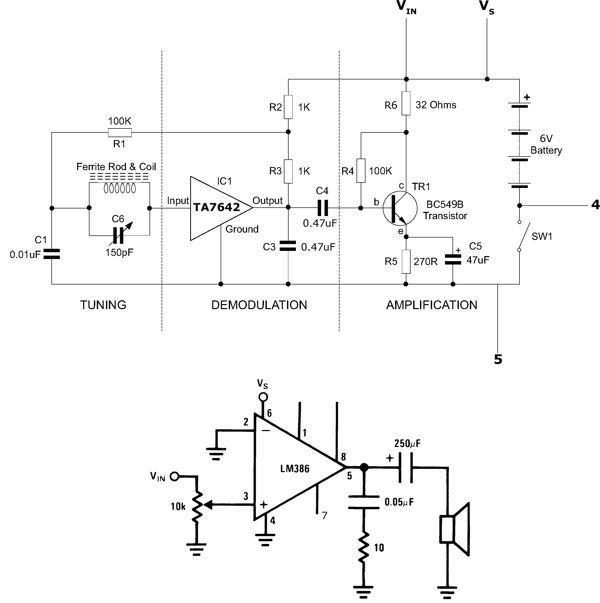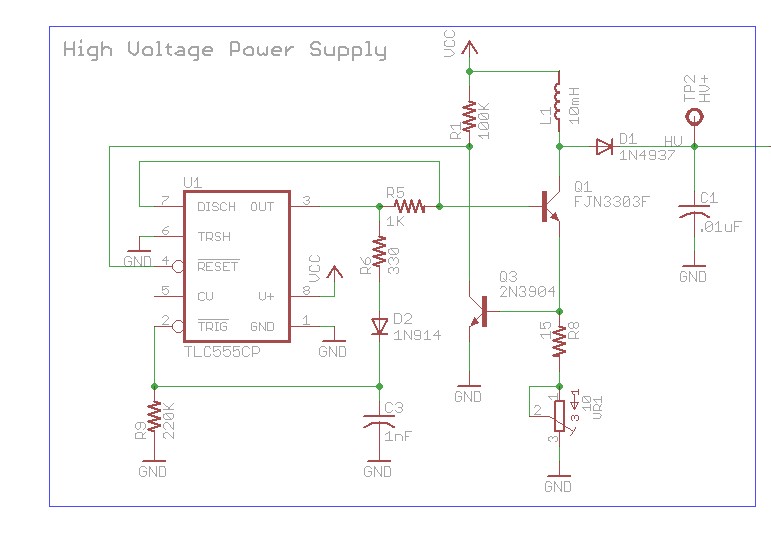
Electret microphone amplifier circuit design using transistors
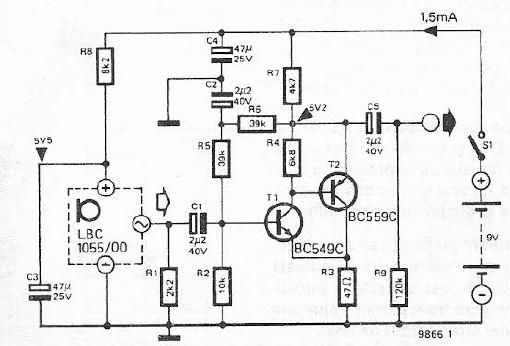
This electret microphone amplifier is constructed using standard electronic components. It is designed to work with an electret microphone capsule, although it can also accommodate a dynamic microphone that has low resistance. The circuit operates with a supply voltage ranging from 5 to 10 volts, with a recommended voltage of 9 volts DC. The circuit exhibits very low power consumption, approximately 1.5 mA, allowing it to be powered by a 9-volt battery. The resistor and capacitor values for R1, C3, and R8 are specifically tailored for the Philips LBC1055/00 electret capsule.
The electret microphone amplifier circuit typically consists of a few key components: an electret microphone capsule, resistors, capacitors, and an operational amplifier (op-amp). The electret microphone capsule converts sound waves into electrical signals, which are then amplified by the op-amp.
In this circuit, the electret microphone is connected to a biasing resistor, which provides the necessary voltage to the microphone. The output from the microphone is coupled through a capacitor (C3) to block any DC offset while allowing the AC audio signal to pass through. The amplified signal is then sent to the output through another resistor (R8), which helps to set the gain of the amplifier.
The power supply for the circuit can be a standard 9-volt battery, which is suitable given the low power consumption of the circuit. The use of a low-power design is advantageous for battery-operated devices, extending their operational life. The choice of components, particularly the values for R1, C3, and R8, is critical for achieving optimal performance, especially when using the specific Philips LBC1055/00 electret capsule.
Overall, this electret microphone amplifier circuit is a versatile and efficient solution for audio applications, providing clear amplification with minimal power requirements.This electret microphone amplifier is designed using common electronic components. This microphone amplifier uses an electret microphone capsule, but can be an dynamic microphone, which have a low resistance. This circuit requires a supply voltage between 5 and 10 volts, is recommended to use a supply voltage of 9 volts DC.
Since the circuit has a very low power consumption (about 1. 5m), circuit can be powered using a 9 volt battery. The values for R1, C3 and R8 are for Philips LBC1055/00 electret capsule. 🔗 External reference
The electret microphone amplifier circuit typically consists of a few key components: an electret microphone capsule, resistors, capacitors, and an operational amplifier (op-amp). The electret microphone capsule converts sound waves into electrical signals, which are then amplified by the op-amp.
In this circuit, the electret microphone is connected to a biasing resistor, which provides the necessary voltage to the microphone. The output from the microphone is coupled through a capacitor (C3) to block any DC offset while allowing the AC audio signal to pass through. The amplified signal is then sent to the output through another resistor (R8), which helps to set the gain of the amplifier.
The power supply for the circuit can be a standard 9-volt battery, which is suitable given the low power consumption of the circuit. The use of a low-power design is advantageous for battery-operated devices, extending their operational life. The choice of components, particularly the values for R1, C3, and R8, is critical for achieving optimal performance, especially when using the specific Philips LBC1055/00 electret capsule.
Overall, this electret microphone amplifier circuit is a versatile and efficient solution for audio applications, providing clear amplification with minimal power requirements.This electret microphone amplifier is designed using common electronic components. This microphone amplifier uses an electret microphone capsule, but can be an dynamic microphone, which have a low resistance. This circuit requires a supply voltage between 5 and 10 volts, is recommended to use a supply voltage of 9 volts DC.
Since the circuit has a very low power consumption (about 1. 5m), circuit can be powered using a 9 volt battery. The values for R1, C3 and R8 are for Philips LBC1055/00 electret capsule. 🔗 External reference
